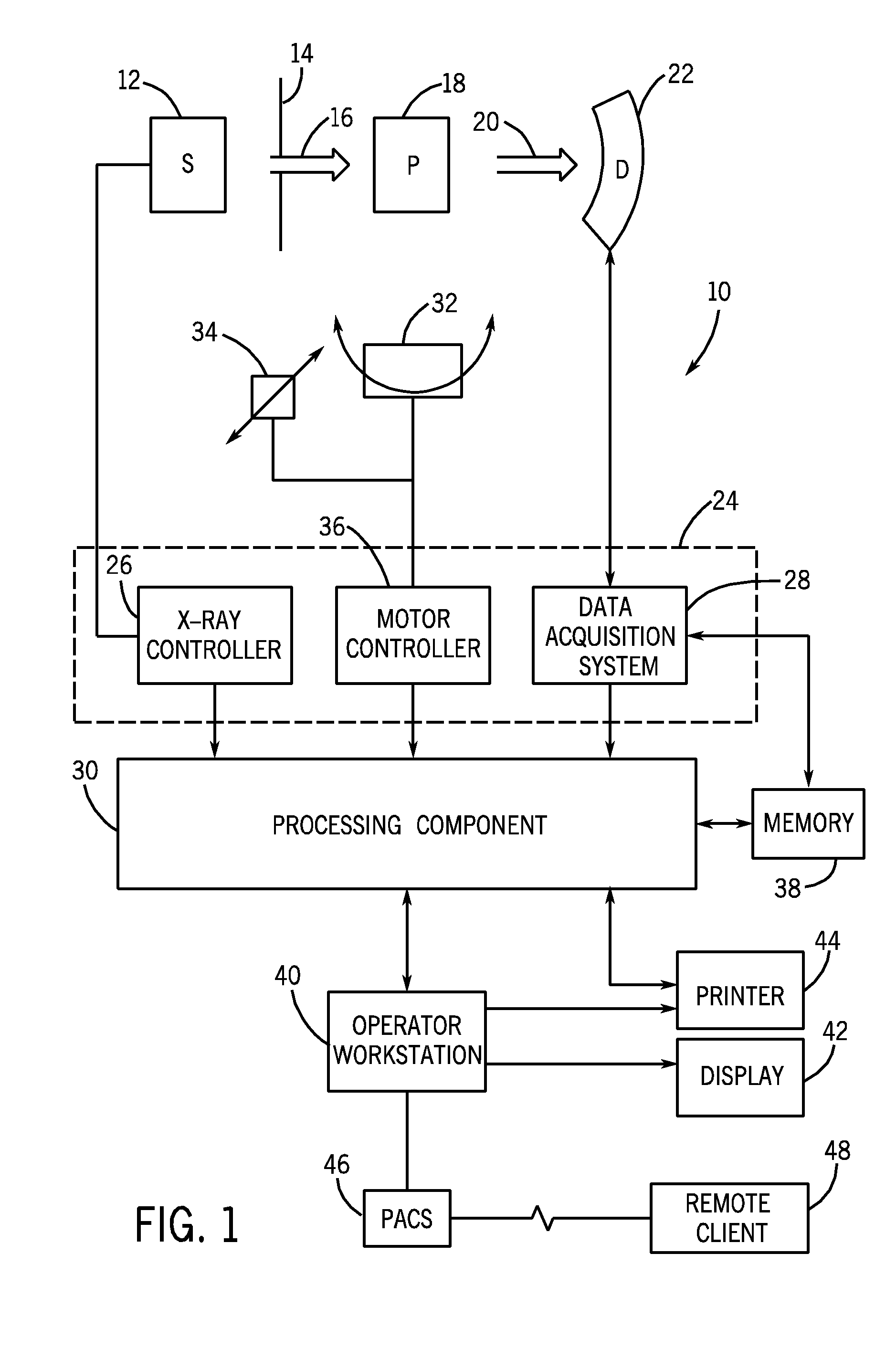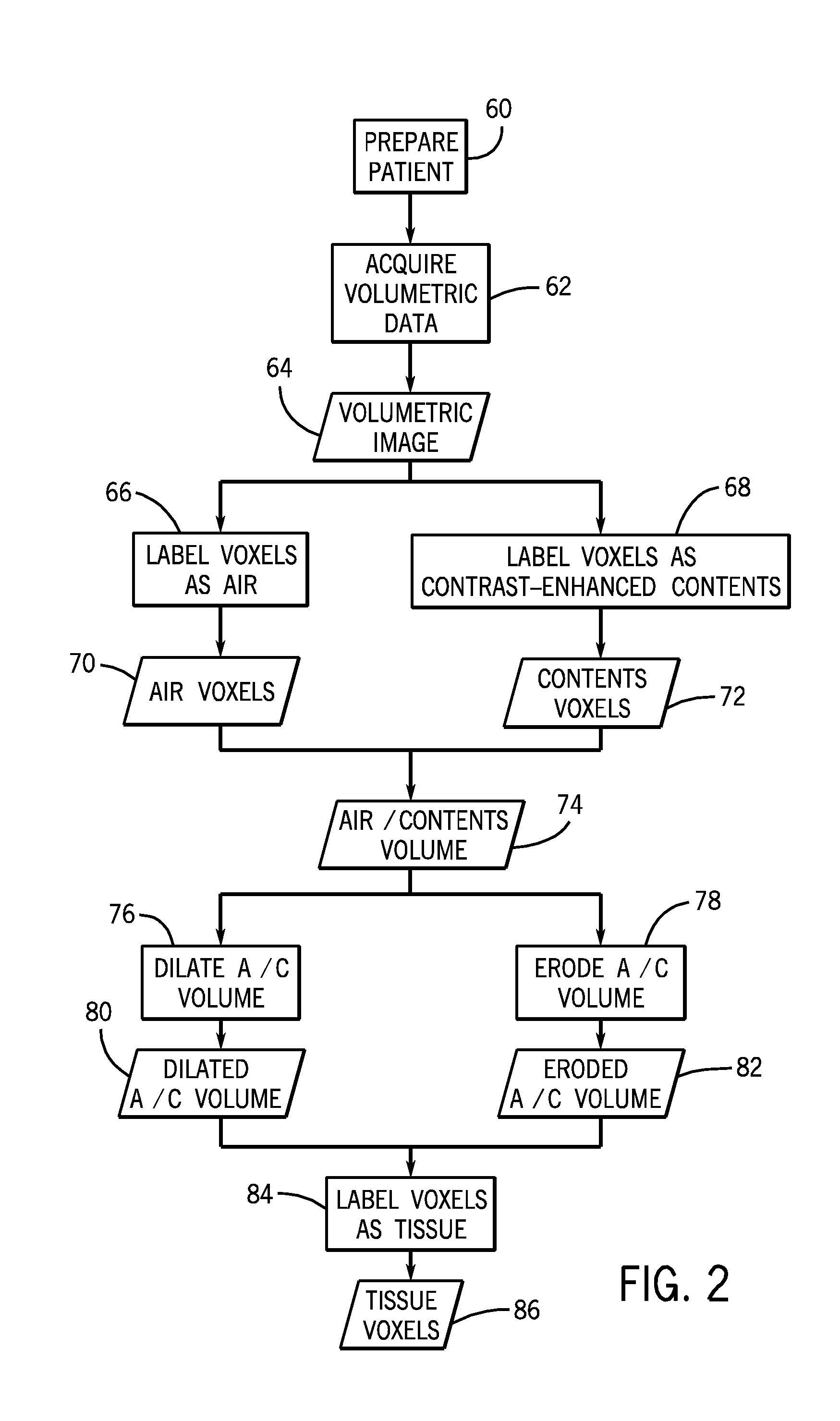Tissue classification in medical images
a technology of tissue classification and medical images, applied in the field of medical imaging, can solve the problems of patient not meeting the periodic screening schedule, patient may not be screened as frequently as recommended, and imaging protocols for other organs may be similarly uncomfortabl
- Summary
- Abstract
- Description
- Claims
- Application Information
AI Technical Summary
Benefits of technology
Problems solved by technology
Method used
Image
Examples
Embodiment Construction
[0013]The present techniques are directed to the identification of different anatomical and / or pathological structures in medical images. The technique may be useful for distinguishing between certain types of tissues in different organs. For example, the present disclosure may be useful in distinguishing between lung nodules and healthy lung tissue. Likewise, the techniques may be useful for distinguishing between colon polyps and healthy colon tissue or for identifying other tissue types associated with other organs. In one embodiment, shape-based descriptors are used classify elements of an image (such as voxels in a three-dimensional representation) as different tissue types of interest. In this manner, different structural elements within an image may be labeled in accordance with the type of tissue they represent.
[0014]With this in mind, an example of a computer tomography (CT) imaging system that may be used to acquire images processed in accordance with the present technique...
PUM
 Login to View More
Login to View More Abstract
Description
Claims
Application Information
 Login to View More
Login to View More - R&D
- Intellectual Property
- Life Sciences
- Materials
- Tech Scout
- Unparalleled Data Quality
- Higher Quality Content
- 60% Fewer Hallucinations
Browse by: Latest US Patents, China's latest patents, Technical Efficacy Thesaurus, Application Domain, Technology Topic, Popular Technical Reports.
© 2025 PatSnap. All rights reserved.Legal|Privacy policy|Modern Slavery Act Transparency Statement|Sitemap|About US| Contact US: help@patsnap.com



